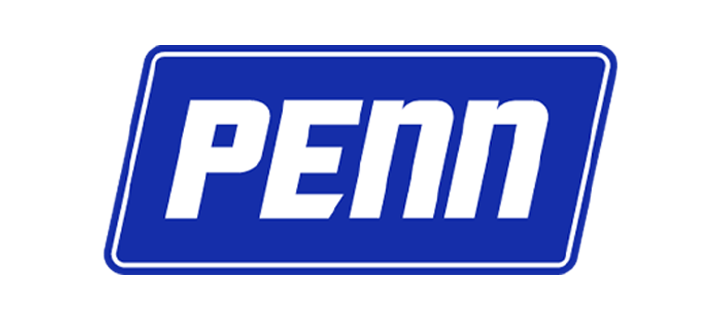What are Fire Doors and How Do They Work?
What Are Fire Doors and Why Are They Essential?
Fire doors are a vital part of any building’s passive fire protection system. Unlike standard doors, fire doors are specially designed to slow the spread of flames and smoke, protecting lives, property, and escape routes during a fire.
At Johnson Controls, we provide a complete range of certified fire doors and commercial fire protection solutions, helping businesses meet regulations while keeping people safe.
How Do Fire Doors Work?
A fire door is built from multiple fire-resistant materials such as timber, steel, gypsum, wire mesh, vermiculite and fire-rated glass. These layers work together to:
- Resist fire for a set time period (FD30, FD60, FD120, or FD240 minutes)
- Automatically close during a fire using a door closer or door release unit to block the spread of smoke and flames
- Protect escape routes and occupants until evacuation is complete
Most modern fire doors incorporate the use of electromagnetic retainer system which can keep doors open during daily use but then release them automatically when the fire alarm is triggered - ensuring the fire door closes securely
How Are Fire Doors Different To Normal Doors?
Certified fire doors are easy to identify by their blue “Fire Door Keep Shut” label and a manufacturer’s certification mark on the door’s edge or top differentiating them from standard doors. Without these, a door cannot be trusted as a fire-rated barrier.

Key differences between fire doors and standard doors include:
- Self-closing mechanism that ensures doors shut firmly
- Heat-sensitive seals that expand to block smoke and flames
- Heavy-duty materials such as steel or reinforced timber
There is a range of different materials that you can choose from for your fire doors, using timber and steel in their construction.
When Are Fire Doors Legally Required?
In the UK, fire doors are required by law in buildings with public access, including:
- Government offices
- Workplaces and factories
- Restaurants and shops
- Prisons and other public facilities
Failure to comply with fire safety regulations can result in legal penalties, but more importantly, it increases risks to lives and property.
The Benefits of Fire Doors
Fire doors are not just regulatory requirements - they are life-saving devices. There primary functions are to:
- Contain fire and smoke
Fire doors hold back fire in its place of origin, giving emergency services more time to respond and prevent damage to the rest of the building. - Protecting occupants and escape routes
Correctly placed fire doors ensure that corridors, stairwells, and exits remain safe for evacuation. - Support fire compartmentalisation
As part of a passive fire protection strategy, fire doors work alongside fire-rated walls and floors to compartmentalise a building, slowing the spread of fire and smoke.
Fire Doors and Passive Fire Protection
Fire doors are classed as part of a building’s passive fire protection system, helping to potentially contain fires when they break out or slow down the rate at which they spread.
They are not designed to be completely immune to fire; instead, depending on their rating, they are designed to hold back the fire for either 30 minutes (FD30), 60 minutes (FD60), 120 minutes (FD120), or 240 minutes (FD240). FD30, FD60 and FD120 doors are available in either steel or timber construction, whereas the FD240 ratings can only be achieved with doors made purely from steel.
A building’s passive fire protection (PFP) depends on:
- Correct construction of fire-rated walls and floors.
- Sealed coatings and penetrations to prevent fire spread.
- Certified fire doors, shutters, and barriers installed and inspected regularly.
Combined with active fire protection - such as fire detection and suppression systems - fire doors play a central role in a building’s complete fire strategy.

Fire Compartmentation And Passive Fire Protection
Fire Compartmentation is the sub-division of a premises into smaller sections or units in which the spread of fire and smoke can be contained. The aim of compartmentation is to stop a fire spreading rapidly throughout the whole building, but to hold it back in sub-sections for as long as possible.
Fire Doors are an important part of fire compartmentation, but they are not enough on their own. Fire rated walls that can hold back a fire for 30, 60, 90 or 120 minutes also need to be incorporated into the fabric of a building. The rating of the fire wall specified will depend upon the building's use, and by related building regulations or insurance requirements.
This 'Passive Fire Protection' relies on the fabric of a building being able to contain a fire situation for long enough to allow its occupants to be safely evacuated.
A premises' ability to contain a fire through Passive Fire Protection (PFP) depends on three main factors:
- That the walls and floors are correctly constructed.
- That any coatings and penetrations to and through these surfaces are sealed to the same standard of fire rating.
- That correctly rated Fire Doors, Shutters and Barriers are installed and are inspected regularly.
Whilst PFP is a critical factor in protecting both people and property from the threat of fire, Active Fire Protection is also a legal requirement in the fire strategy for many buildings.
Active Fire Protection includes the installation of Fire Detection and Fire Suppression systems which automatically detect and combat a fire emergency should the need arise.
How Safe Are Your Existing Fire Doors?
Having fire doors installed is not enough - they must be inspected and maintained to remain effective. Under the Regulatory Reform (Fire Safety) Order, building owners are legally required to ensure fire doors:
- Retain their fire resistance over time
- Are regularly inspected and serviced
- Are repaired only by trained engineers
Johnson Controls recommends fire door inspections every 6 months (or more frequently in high-traffic areas). Poor maintenance or minor alterations can compromise a fire door’s ability to protect your building.

Johnson Controls Fire Protection Solutions
At Johnson Controls, we provide:
- Certified fire doors tailored to commercial environments
- Inspection, servicing, and maintenance for all types of fire doors and shutters
- Integrated fire detection and suppression systems for complete building protection
Our expertise ensures your fire doors and wider fire safety strategy remain fully compliant and effective in protecting people, assets, and business continuity.
Contact Johnson Controls today to arrange a fire door inspection or learn more about our full range of commercial fire detection and fire suppression solutions. You can also view our fire door frequently asked questions here.
Johnson Controls offer a wide range of Fire Safety Solutions
Doors
Johnson Controls has a specialised design and installation team who work with safety and security door solutions for just about every vertical market imaginable.
Fire Suppression
We manufacture, configure, and install an unmatched selection of fire suppression systems including sprinklers, valves, extinguishers and agents.
Fire Detection
Johnson Controls has a market leading track record when it comes to delivering maximum safety through the supply and installation of our innovative products and services.






















.jpg?la=en&h=320&w=720&hash=244C75B74F0F77521D56164450973BCD)














.jpg?la=en&h=310&w=720&hash=8D9823F26AA80B2B75C3E4B2E61770DC)


.jpg?la=en&h=320&w=719&hash=13CA7E4AA3E453809B6726B561F2F4DD)
.jpg?la=en&h=306&w=720&hash=F21A7CD3C49EFBF4D41F00691D09AEAC)

.png?la=en&h=320&w=720&hash=18CFCCD916C92D922F600511FABD775D)






















